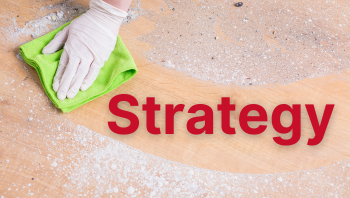Why strategy is essential right now.
“Strategy doesn't work anymore in our fast-paced world!”
I hear this sentence at least once a week.
Mostly from CEOs who have just launched their third “strategy offensive” in five years. And you know what? They're partly right – but for the wrong reasons.
The problem isn't that strategy no longer works. The problem is that 80% of executives confuse strategy with planning. They create 47-page presentations with five-year plans as if they were still living in 1985, when you knew (pretty much) exactly what was going to happen next year.
Strategy is not a plan. Strategy is a navigation system.
A GPS doesn't plan your entire route down to the smallest detail and then stubbornly ignore all traffic jams and construction sites. It constantly reorients itself, but keeps its eyes on the destination. That's exactly how strategic thinking works.
I see it every day: companies that don't have a strategy make decisions as if they were in a fog – sometimes left, sometimes right, but somehow they get there. Only it costs time, nerves, and usually a lot of money.
The three most common strategy myths I encounter in practice:
Myth 1: “We can't plan, everything changes too quickly.” Wrong. That's precisely why you need guidance. A captain who encounters a storm doesn't throw his compass overboard – he looks at it more often.
Myth 2: “Our industry is too specialized for classic strategy approaches.” Oh, so you're the only industry with customers, competitors, and scarce resources? Interesting. The principles of strategic thinking apply everywhere – from machine manufacturing companies to city administrations.
Myth 3: “Strategy is for big corporations.” Nonsense. Smaller companies in particular cannot afford expensive detours. They need strategy more than any corporation that can afford to lose a few million.
What strategic thinking really means:
Strategic thinking means asking the right questions: Where do we want to go? What are our strengths?
Where are the biggest levers? Which decisions are reversible and which are not? And above all: What are we deliberately leaving out?
A customer told me last week: “We don't have time for strategy, (ch wants to be re-elected and we have to deliver operationally!” My response: “That's exactly why you're wasting 40% of your time on the wrong priorities.”
Strategy is not a luxury for quiet times – it is essential for survival in turbulent times.
Think about the pandemic: Which companies survived and even profited? Those with a clear strategic orientation. They knew what they stood for, where their strengths lay, and how to make quick decisions.
The others? They are still debating whether working from home was a temporary measure.
Strategy? It helps!
Strategy is powerful when it fulfills three functions:
- aligning the organization with the areas of development that will be important in the future,
- synchronizing all areas, and
- generating implementation energy among all employees.
All of this is what a good strategy “creates.” And in today's extremely uncertain times, such a strategy is not only justified, but also possible – especially now.
My tip for this week:
Sit down for an hour and answer this one question honestly: “If someone from outside observed our company for three months, what strategy would they deduce from it?”
If the answer is “none that I can see,” you've found your next strategy project. If you answer “it changes every few weeks,” you've found it too.
Strategy is not the problem. The problem is bad strategy that thinks it's good.
What is your experience? Where have you seen strategic orientation make a difference? And where has a lack of strategy really hurt?
P.S.: Next week, we'll look at the strategic triangle and why most strategies fail because of culture – not because of the idea.


About me

All Rights Reserved
Get in touch
-
+49-(0)941 600 93 003
-
This email address is being protected from spambots. You need JavaScript enabled to view it. -
Thomas_Huber
ToChange Gmbh
-
Thomas Huber
-
Traubengasse 6
-
D-93059 Regensburg

